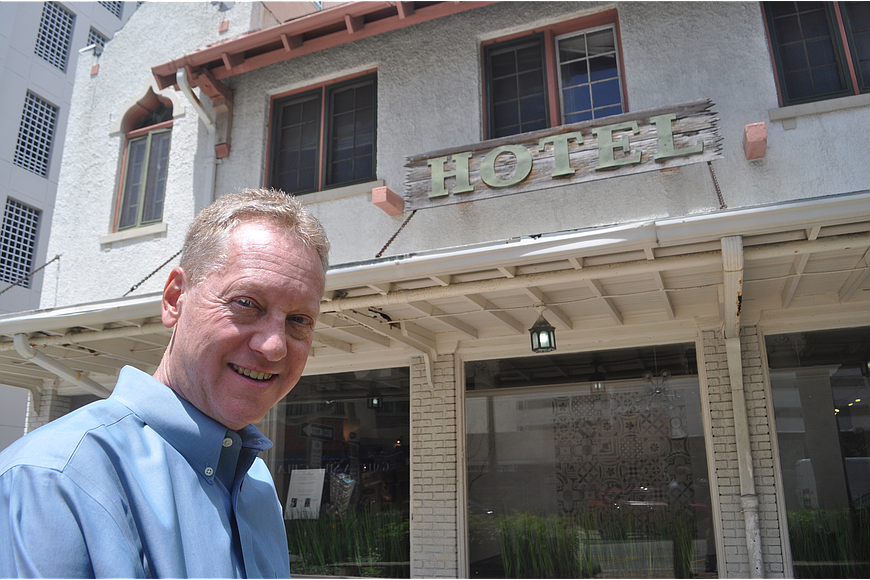- April 26, 2024
-
-
Loading

Loading

The developer of the DeMarcay on Palm, an 18-story, 39-unit condominium, is now free to use whatever construction method it prefers to build the project.
On Monday, the City Commission voted 4-1 to remove a requirement that would force the developer to use precast construction for a portion of the building. In 2006, the city included the provision in an attempt to minimize the impacts of the construction.
Now, the developer convinced the commission that precast construction would actually be more time-consuming and dangerous than post-tension construction, the standard technique for building high-rises in Sarasota. At the time, a representative for the developer said precast construction would achieve that goal.
“Any building like the DeMarcay should be built with post-tension construction,” said Greg Kveton, whose company, XAC Developers, purchased the site in 2014. “It’s the fastest, most efficient way of constructing a high-rise building.”
The project will be built at 33 S. Palm Ave., on the site of the historic DeMarcay Hotel and Roth Cigar Factory buildings. The developer expects to begin construction in spring 2018.
Residents in the neighboring condo at 1350 Main St. strongly objected to the new construction technique. They argued post-tension would have a greater impact on the surrounding area, because precast construction involves fabricating some of the pieces of the building off-site before transporting them to the development site.
Residents said the project was controversial when it was initially proposed, and that the assurances about precast construction were an important factor city officials used in their decision-making.
“The only reason this was approved was because of this proffer,” said resident Jay Leonard.
They also questioned the history of the DeMarcay developer. Tim Litchet, the city’s director of neighborhood and development services, said the developer offered differing takes on whether a contractor was willing to build the project using precast construction.
Attorney Robert Lincoln, representing the 1350 Main residents, suggested the developer was only interested in the new technique because it was cheaper and more efficient for them.
“They played the city, and they played the city staff to get to a situation where they’re getting exactly what they want,” Lincoln said.
The commission leaned hard on testimony from building official Larry Murphy, who said he had not seen a precast structure built under similar conditions to the DeMarcay project. He said he had concerns about hoisting large pieces of prefabricated concrete in the 20-foot alley between the project site and 1350 Main.
He also disputed claims that the post-tension construction would create more concrete dust than the precast method.
“All construction inherently is dusty and dirty,” Murphy said. “I couldn’t testify if one was ever more clean than the other.”
Commissioner Susan Chapman was the only board member to vote against removing the requirement. She highlighted the building’s approval under the now-defunct Downtown Residential Overlay District, which gave the project a density of 200 units per acre, and said the construction change could not be considered in a vacuum.
“If they want to change the construction method, go back to the original density,” Chapman said. “I think a deal’s a deal. It’s kind of a betrayal of a promise to the public.”
Other commissioners said they understood residents’ concerns, but saw no evidence to convince them post-tension wasn’t the preferable form of construction.
“By denying this, we really don’t accomplish anything,” Commissioner Liz Alpert said. “They’re going to build the building either way.”